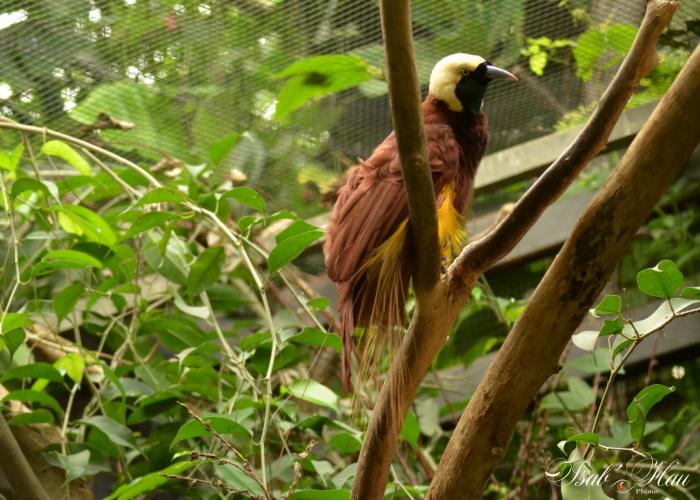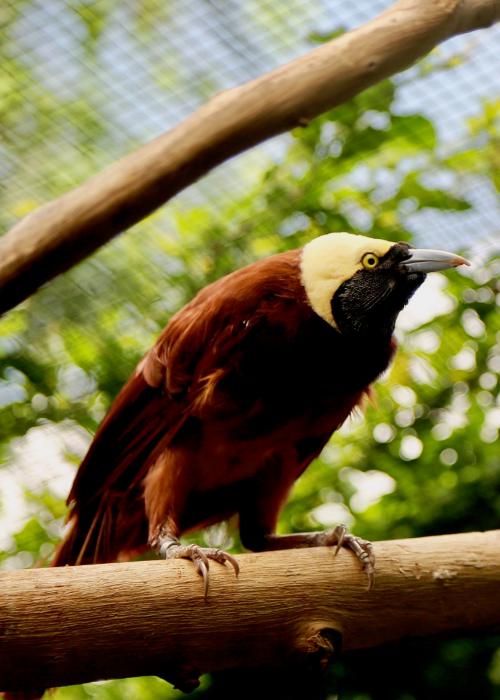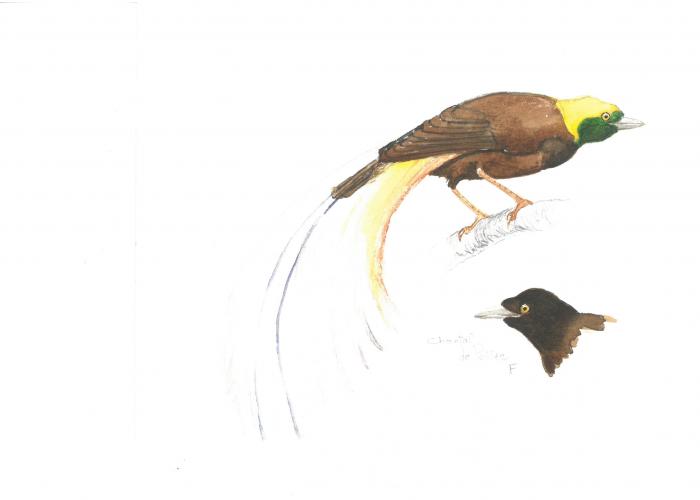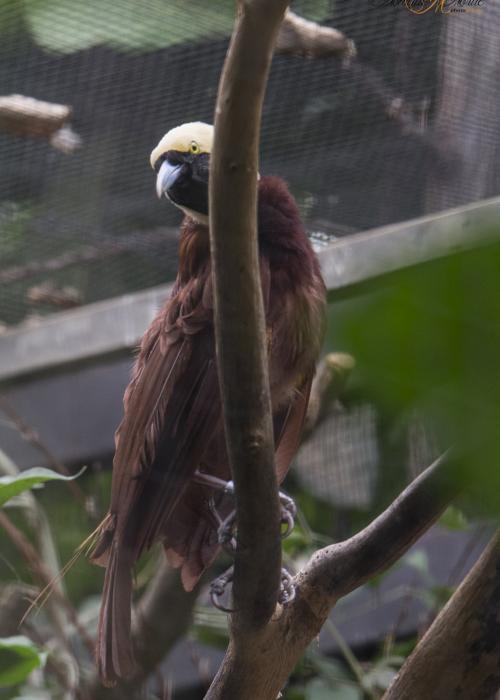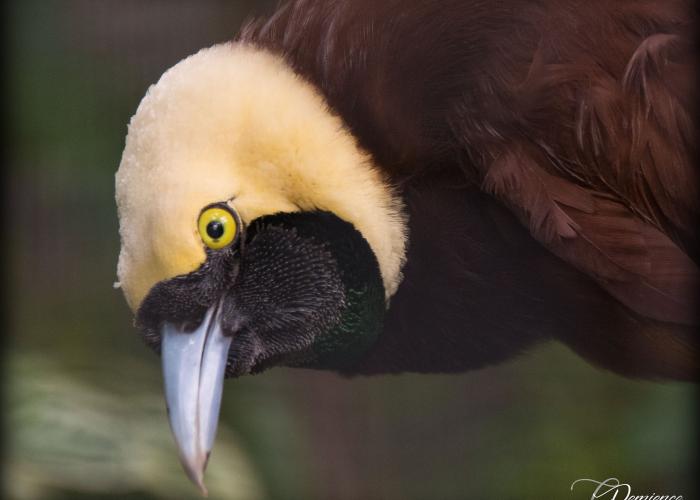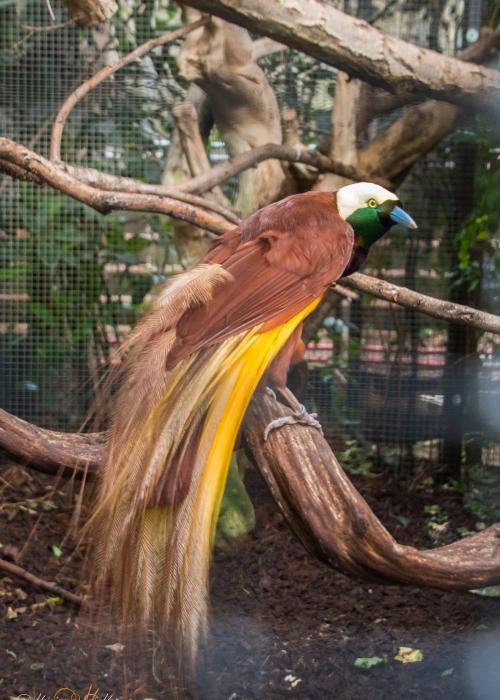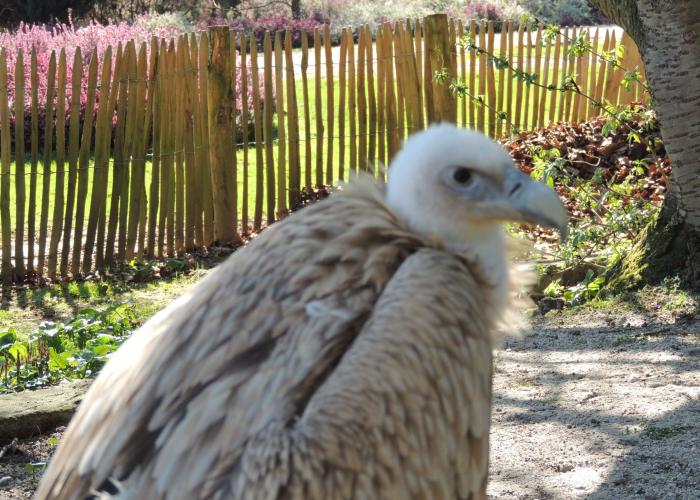Greater Bird-of-paradise
Like all birds-of-paradise, it has pronounced sexual dimorphism
The greater bird-of-paradise is the largest member of the Paradisaea genus, measuring around 43 cm, including its tail wires. It inhabits the primary rainforests that cover low-lying wetlands and hills. Like all birds-of-paradise, it has pronounced sexual dimorphism. The male has a bluish beak, a maroon-brown body, an iridescent green chest and a yellow-white head. Its long flank plumes are light and filament-like, ranging in colour from yellow to white. The female’s plumage is much plainer.
The greater bird-of-paradise carries out its courtship display in the tree tops, choosing an open, leaf-free space known as a “lek”. Here, males gather in small groups to practise a ritual dance for seducing the females. First they call to the female, then, turning their backs on her, they lean forward, spasmodically spreading their wings and opening their display feathers in a quivering bouquet. Finally, if the female is still attentive and interested, the chosen one turns around, faces her, wings apart and display feathers still erect. He moves closer until he can encircle the female with his wings, and then mating commences.
Greater Birds-of-paradise
Discover the Greater Birds-of-paradise in our “Jardin des Mondes”.
A less threatened species
- Name : Greater Bird-of-paradise
- Latin name : Paradisaea apoda
- Origin : Southwest New Guinea and Aru Islands (Moluccan Archipelago)
- IUCN status : Least concerned
- Cites : Appendix II
